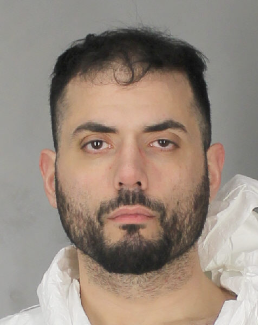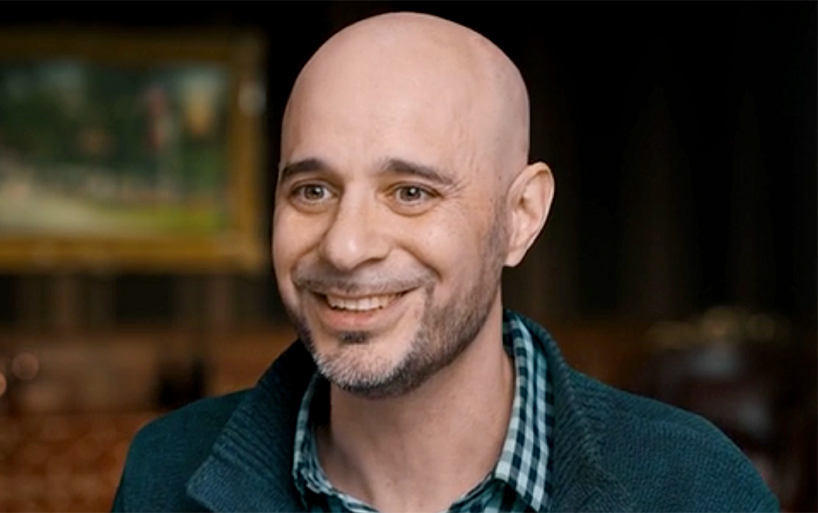There have been 80 threats to Nassau County schools within the past year. Today, Nassau County Executive Bruce Blakeman outlined the current school safety plan in place to protect children across the county.
“There’s nothing more important than the safety of our children, especially when they’re going to school,” Blakeman said at a news conference this morning at the David S. Mack Intelligence and Training Center in Garden City. “To me, as a parent, that’s something that I would consider number one in my priority as county executive.”
The 80 school threats faced this year alone are nearly quadruple last year’s 23 threats. Fear of potential school violence is being felt throughout Long Island; police have reportedly responded to at least two dozen threats in Suffolk County in only the past month.
In Nassau, there have been threats to schools in Freeport, Hempstead, Uniondale, and Westbury, with a threat made to a Valley Stream school just this morning. Kellenberg Memorial High School endured four consecutive days of bomb threats, the investigation into which is ongoing.
There are current emergency plans in place for the county police department, and within schools themselves — but for those school safety plans to be effective, there’s a role for individuals to play as well.
“We’re here to show you what we’re doing,” Blakeman said, “And we’re here to ask for your help.”
Nassau County Police’s School Safety Plan
Nassau County was recently named the safest county in America by U.S. News and World Report, which Blakeman attributed to his administration’s emphasis on policing. His administration has hired 200 new police officers in the last 2 years, and will be hiring more, he said, as well as correction and probation officers.
“Our headcounts are up above anything that they’ve been in the last decade, and we will continue to do so because we take the safety and security of our county very, very serious.
But numbers aren’t enough — as the Uvalde school shooting showed the nation, officers must be prepared to respond to real life emergencies. A new “training village” designed to give Nassau County police experience in real-world situations will open behind the Mack Intelligence Center later this year. The facility will feature banks, religious institutions, a train station, and perhaps most importantly, a school. There, officers can practice their school safety plan by responding to live shooter scenarios.
Additionally, the county has initiated Operation Overwatch, a program in which four units of five patrol cars go “randomly” throughout the roads of Nassau County. This is to make sure that people know they’re out there, and that they’re available if an emergency necessitates a rapid response from additional officers, Blakeman said.

The K-9 unit is ready to be used in the case of any explosive threat, as seen recently with Kellenberg Memorial High School, and patrol officers are out every day, Blakeman said, in areas around the 550 — 400 public and 150 private — schools in Nassau County.
As part of the school safety plan, each police car is also equipped with a sledgehammer, tactical vests and helmets, a defibrilator, a kit to stop bleeding, and other emergency equipment, said Commissioner of Nassau County Police Patrick Ryder at the news conference, so they don’t have to waste time in an emergency by waiting for additional supplies to come.
“So every one of our officers has no reason to stop and wait for anybody else,” Ryder said.
Further, Homeland Security visits county schools every day, testing each one every year for its school safety plan and emergency preparedness. Emergency services, too, are always present.
“You may not see them but they’re there,” Blakeman said. “Same as our Bureau of Special Operations, which is our SWAT team. They are strategically located throughout the county to respond immediately to any threat.”
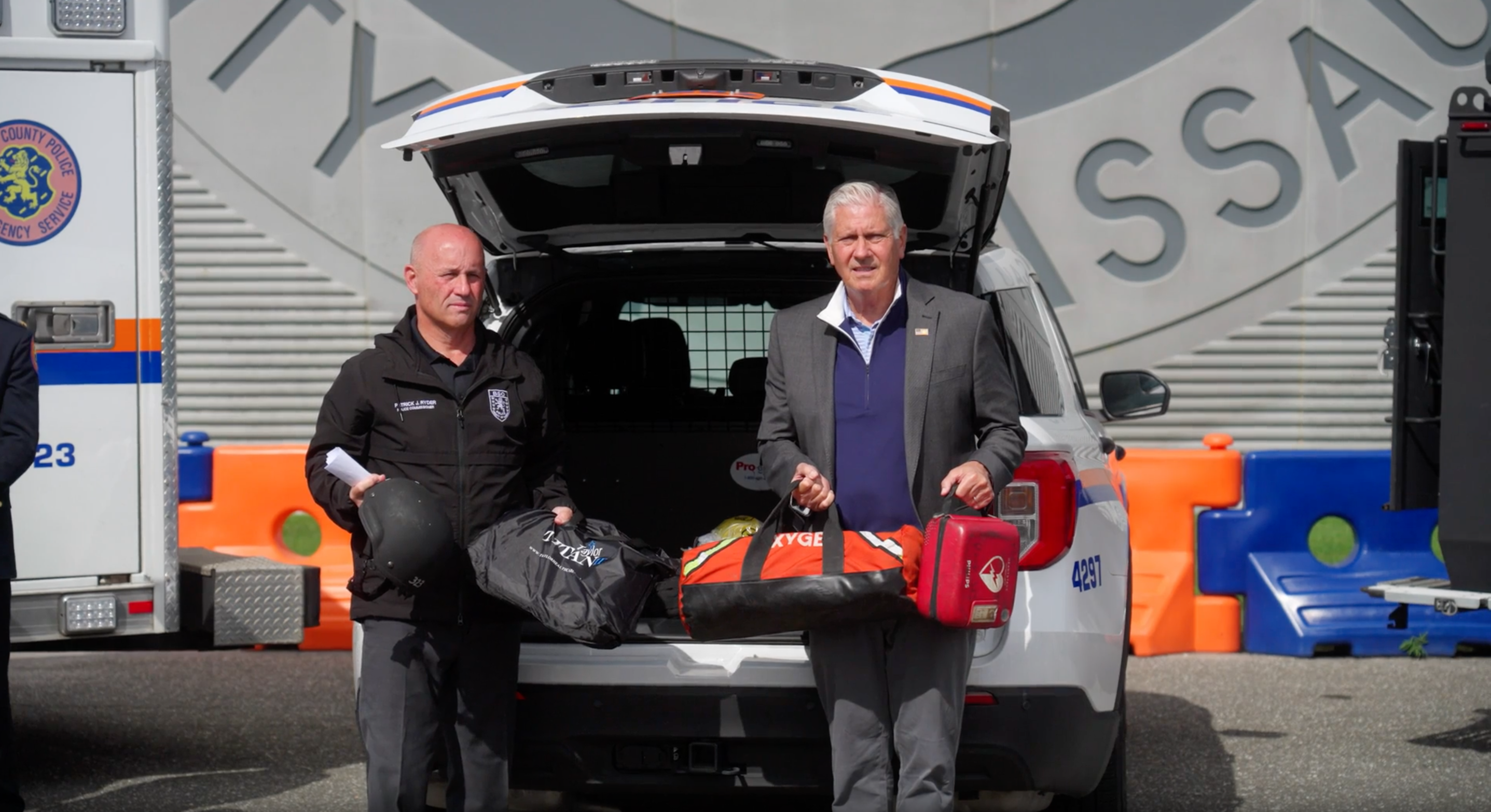
Increasing School Security
Every single public and private school in Nassau County is now outfitted with Rave App, a kind of “panic button” that students or faculty can hit in the case of an emergency. An integral part of each school safety plan, It bypasses 911 and goes straight to the police supervisor’s desk.
“Once the Rave App is activated, we send in the cavalry,” Blakeman said.
School infrastructure has also changed in order to keep up with safety threats that seem to only become more and more frequent. One such addition is a “man trap.” Parents who pick their children up from school may be familiar with now needing to be buzzed in, and often having to show their driver’s license at reception as proof of identification. These are in place to decrease the likelihood of a shooter entering the school.
But in the case a shooter does enter a school, there also must be infrastructure in place that slows them down — because the name of the game in a school safety plan, Ryder said, is speed.
“70 percent school shootings are over in three to five minutes, and 40 percent of the 70 percent are over in two minutes,” Ryder said. “Response time in Nassau County to any emergency call is one to three minutes.”
“The quicker (police) get in there, the slower we slow the shooter down, the more we save lives,” he said.
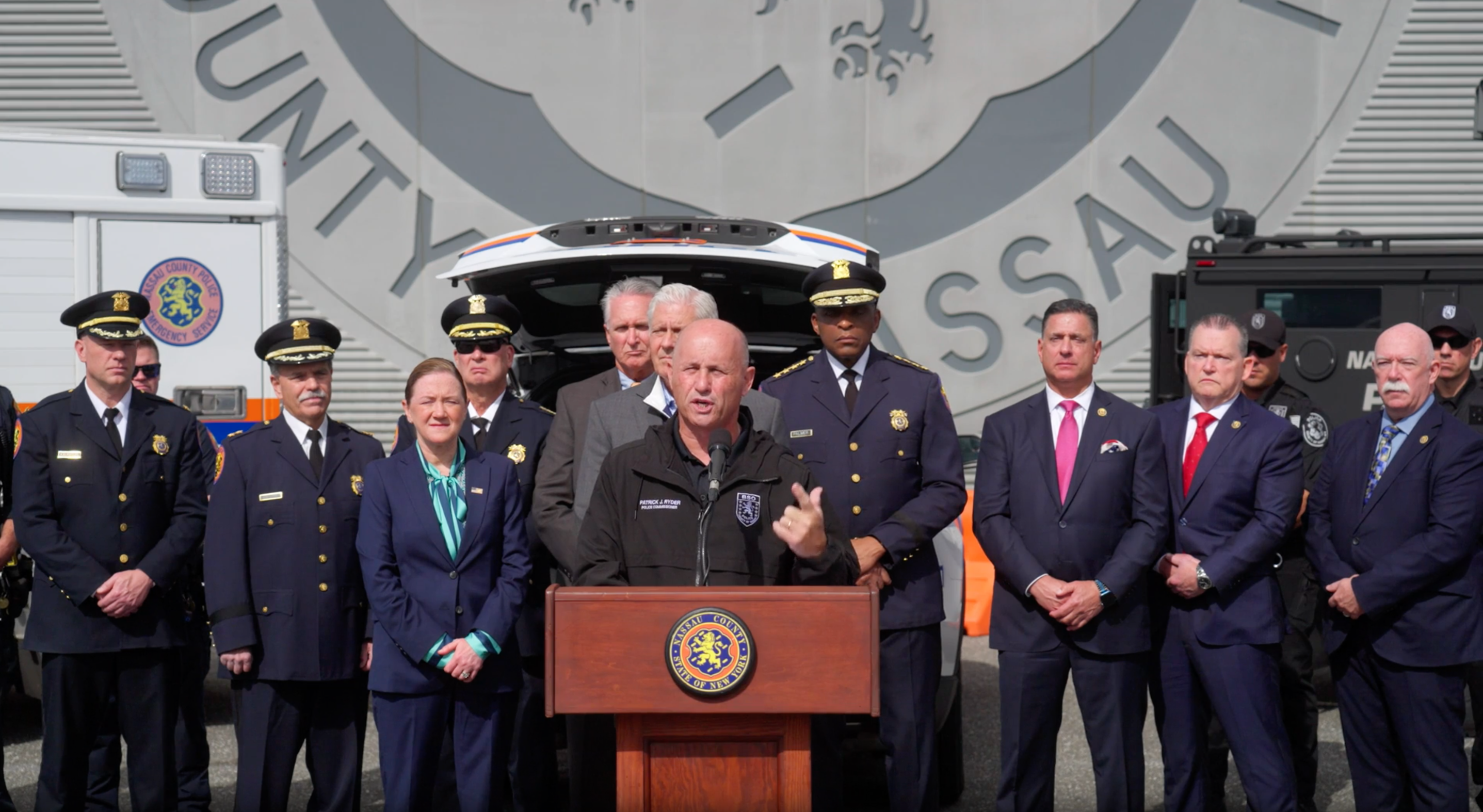
Most schools now also have a “man trap,” Ryder said. This means that when someone is buzzed in, they go through a first set of doors, but can’t yet get through a second set doors. A potential shooter would be trapped between two sets of bulletproof doors.
As part of the school safety plan, police must also visit a school every day. Between 177 cops out there visiting, every single school building in Nassau County is visited every three days, Ryder said. Cops need to be familiar with the school’s layout in order to respond effectively to an emergency situation. By knowing the schools, officers don’t need to waste time finding a cafeteria or library when every second counts.
How People Can Help Keep Their Schools Safe
Police preparedness is only part of the school safety plan, Blakeman said — the rest is up to individuals. He urged people to dial 911 as soon as they see something or someone suspicious in or around a school.
“Don’t hesitate,” Blakeman said. “That hesitation could cost lives.”
But an increasingly important part of school safety is educating children on what it truly means to make a threat.
“‘I’m coming back to this school, and I’m gonna shoot it up’ — a kid could say that out of frustration,” Blakeman said. “He could say it out of anger. He could say it thinking he’s kidding around.
“We take it serious. And it’s a crime. And you have to talk to your children about using that kind of language.”
“It’s not a joke,” he added. “If a cop or a civilian dies responding to that 911 call, that child is gonna be held responsible for the death of that officer or that civilian.”
If a student makes a threat against a peer, or a class, the school safety plan mandates they be transported to NUMC for a mandatory medical and psychiatric evaluation. Regardless of what they intended, the child will be prosecuted for “making a terroristic threat,” which comes with one to three years of jail time. That still, however, is not as severe as the penalty that child “should” get, Ryder said, which is likely the reason kids “keep doing what they’re doing.”
“Unfortunately, the penalties with respect to the children are not as stiff as they used to be,” Blakeman said. “They’ve chaged the laws with respect to that.”
“Don’t do it,” he added, directed to kids. “It’s a crime, and we will go after you, and we will prosecute you.”
Parents are also urged to talk to their kids not only about the dangers of making threats, but also the need to report any threats they see or hear, especially on social media. The Nassau County Police Department has been trying to teach children to “report, don’t repost.” Doing so will help school safety plans be as efficient as possible, Ryder said.
The Future Of School Safety Plans
Nassau County’s school safety plan uses intelligence as a tool to combat any potential school violence, Blakeman said. And there have been major steps forward in terms of that intelligence.
The FBI and other federal organizations that the county works with are developing new technologies in order to track who makes school threats.
“I believe we’re going to have a breakthrough at some point,” Blakeman said. “We’re gonna be able to track and apprehend those who do this. And they will be punished.”
Intelligence operations are what revealed, for instance, that the ongoing threats to Kellenberg Memorial High School are all coming from one person. Officials plan on announcing the results of that investigation by the end of this week.
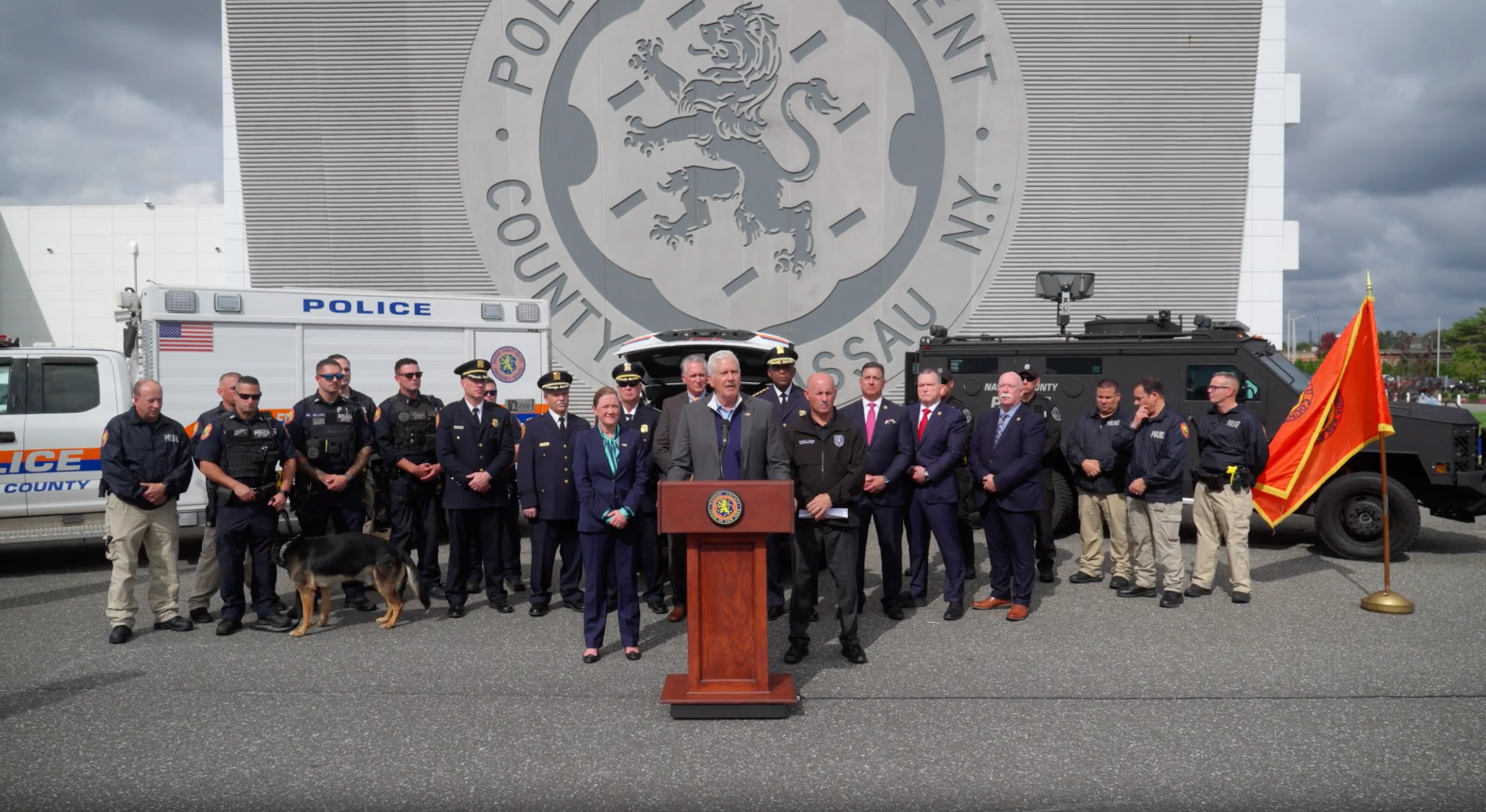
This morning’s news conference on the county’s school safety plan, however, was oddly timed, some Democratic Nassau County officials say. Following the threats to Freeport, Hempstead and Uniondale, Nassau County Legislature Alternate Deputy Minority Leader Siela Bynoe (D-Westbury), who represents District 2, where most of the affected schools were, requested Blakeman publicly outline his school safety plan.
Bynoe requested “an immediate briefing from your administration regarding these incidents and the steps you have taken to communicate with the districts and schools that have been impacted” in a letter to Blakeman. That letter was sent on Sept. 17, two weeks ago. Blakeman’s administration reportedly ignored the letter.





